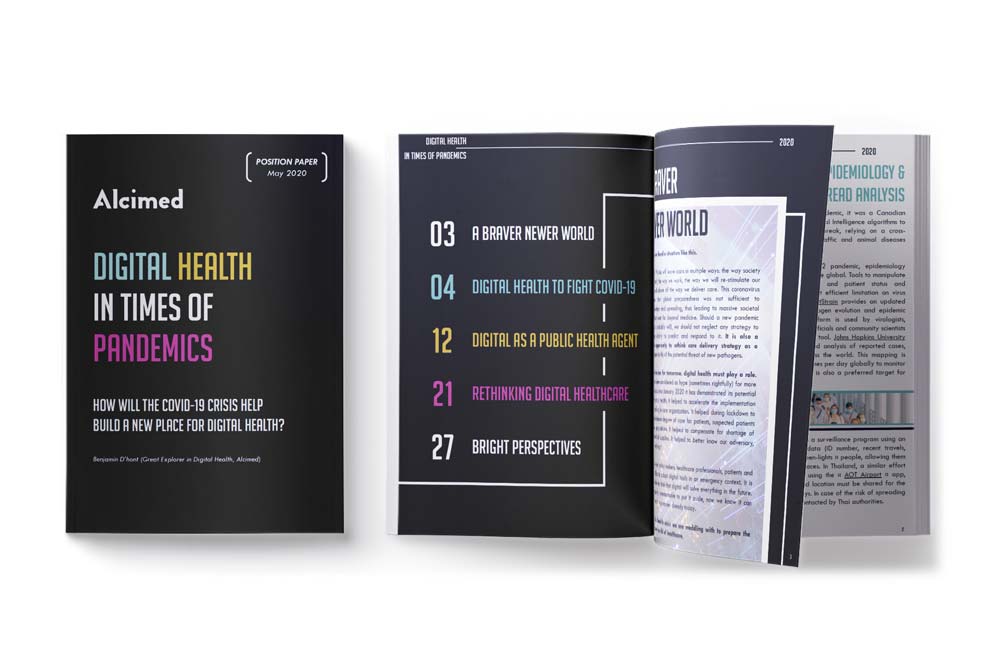Teleconsultation, a key opportunity for patients to improve their access to care at home
Many teleconsultation startups have emerged in recent years, and the current COVID pandemic had only accelerated developments. In China, the Ping An Good Doctor platform experienced a 900% increase in new users. In Singapore, government subsidies were extended to teleconsultation for management of seven chronic conditions, namely diabetes, hypertension, lipid disorder schizophrenia, major depression, bipolar disorder, and anxiety.
Major insurers have also partnered with teleconsultation platforms to provide teleconsultation services. An example was the partnership between AXA and Doctor Anywhere, with a focus on mental wellness amidst the anxiety and social isolation brought forth by COVID.
These initiatives have enabled payors to remain relevant while raising the brand recognition of many startup teleconsultation providers, and enabled patients to continue receiving healthcare amidst lockdown. However, data privacy and security concerns persist in home health care services, as reminded by a recent incident in the UK where teleconsulting videos were leaked to other patients.
New home-based treatments to improve patients’ quality of life while reducing cost for the healthcare system
As chronic diseases are life-long, having to regularly receive treatment at hospitals is a major loss of economic productivity for working patients. In addition, travelling can be inconvenient for the elderly and mobility impaired. On the other hand, hospitals would also face increased economic burden if having to expand their physical capacity to accommodate more patients with chronic diseases. To enable more diseases to be treated at home, including chronic diseases, home care innovations are needed in miniaturization of therapeutic devices, and improving safety profiles of existing treatments.
For example, a late stage kidney patient in the US can expect to incur about US$83,000 in dialysis cost each year, on top of the discomfort and inconvenience of having to go through dialysis. Although peritoneal dialysis and home hemodialysis have been available for a long time, these systems are still relatively bulky. Singapore-based AWAK Technologies was able to develop a portable sling pouch size peritoneal dialysis system using sorbent technology. Their first-in-human trial was concluded in late 2018, results were promising and further trials are underway.
Improvement of home-based treatments are also expected in cancer treatments. For example, Bortezomib (Velcade) is a chemotherapy available for multiple myeloma patients, and initially available in an intravenous delivery format. Similar to other chemotherapies, bortezomib has to be administered at hospitals due to potential adverse events and requirement for venous access. Therefore, a subcutaneous delivery format with an improved safety profile was also developed. This inspired a home administration pilot program in France where trained nurses would deliver the subcutaneous injection to patients at home. The home administration program has an estimated cost saving of 20% for the healthcare system and was preferred by 94% of patients.
Home health monitoring devices to enable more efficient management and follow up of chronic conditions
A key part of managing chronic conditions is to monitor for early signs of deterioration, so that early interventions can be administered to improve outcomes. At the present, monitoring is mostly achieved through regular in-person follow-ups where a battery of biomarker tests can be carried out. In this area, cost effective medical monitoring devices have a huge potential to improve patient outcomes.
Patients with chronic kidney disease are at risk of life-threatening hyperkalemia. As a consequence, they have to undergo regular blood tests to monitor potassium levels. AliveCor developed a portable electrocardiogram (ECG) device, allowing doctors to remotely monitor patients for abnormal ECGs that could be caused by hyperkalemia and other cardiovascular anomalies. If implemented, in-person follow-ups for blood test could be drastically reduced.
In the management of heart failure, monitoring pulmonary artery pressure (PAP) can give advance warning of deterioration, allowing for early intervention. Endotronix and CardioMEMS (acquired by Abbott) have both developed implantable PAP sensor systems, which allow doctors to remotely monitor patients at home. Remarkably, post approval studies have revealed that the heart failure-related hospitalization rate was cut by more than half one year after implant.
Moving healthcare from hospital to more home health care services can improve patient’s quality of life while generating substantial cost savings for healthcare systems. The current COVID-19 pandemic has highlighted the value of home-based services to free up hospital capacity and reduce exposure of vulnerable patients to infection. New teleconsulting platforms, new modes of treatment administration, and new medical devices have the potential to speed up our healthcare transition. A challenging but exciting time is ahead of us, as regulators and innovators seek a balance between safety, patient outcome and cost reduction while implementing home health care solutions. At Alcimed, we are actively looking at new opportunities and innovations to bring healthcare home, which will, in the next few years, be critical to establish sustainable healthcare systems.
About the authors
Warren, Consultant in Alcimed’s Healthcare team in Asia-Pacific
Delphine, Head of Healthcare activities in Alcimed’s team in Asia-Pacific



